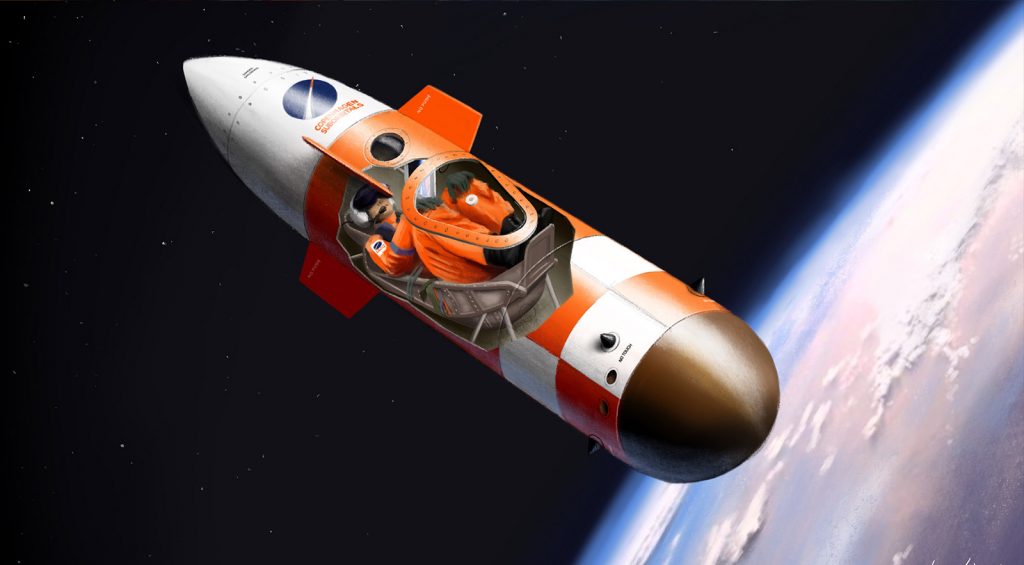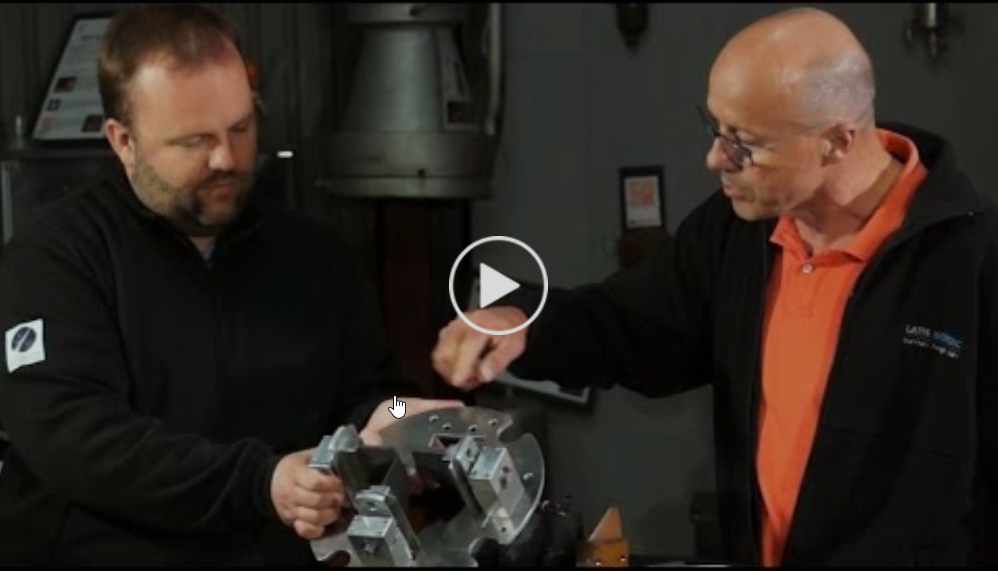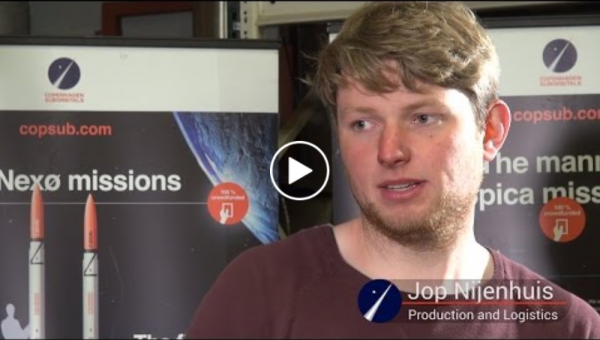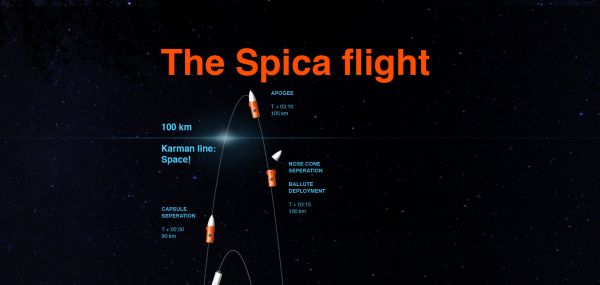The goal
The ultimate goal of Copenhagen Suborbitals is to launch a human on a suborbital ride to space. For this purpose we are developing the Spica rocket.
Designing a manned, suborbital space flight system is not an easy task. Currently there are only two manned suborbital spaceflight flight systems operational; Blue Origin’s New Shepherd and Virgin Galactic’s Spaceship Two. Both systems are bankrolled by multi-million dollar companies, employing leading aerospace professionals.
Our mission is, in every sense, without precedent.
- No crewed spacecraft has ever been developed by a third sector organisation.
- No crewed spacecraft has ever been developed and flown from Europe.
- No crewed spacecraft has ever launched from an aquatic launchpad.
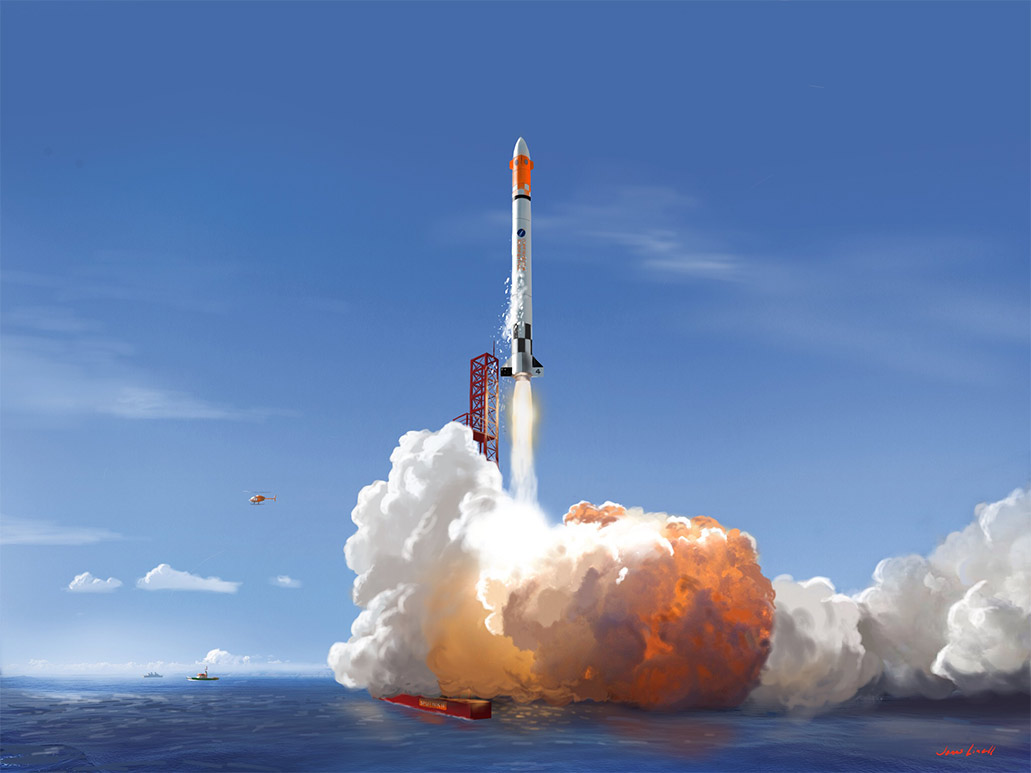
We’re flying an amateur astronaut into space on an home build, crowdfunded rocket. Want to see it happen ?
Become a Copenhagen Suborbitals Supporter
We need your help to build our Spica rocket. We all work for free in our spare time, but we still need to pay for materials. Become a supporter and be part of the most awesome space program in the world.
Spica is unique – the first third-sector crewed spacecraft ever built. Our Spica launch program will make Denmark the fourth nation on Earth to send an astronaut into space on a domestic rocket, joining the ranks of Russia, China and the USA.
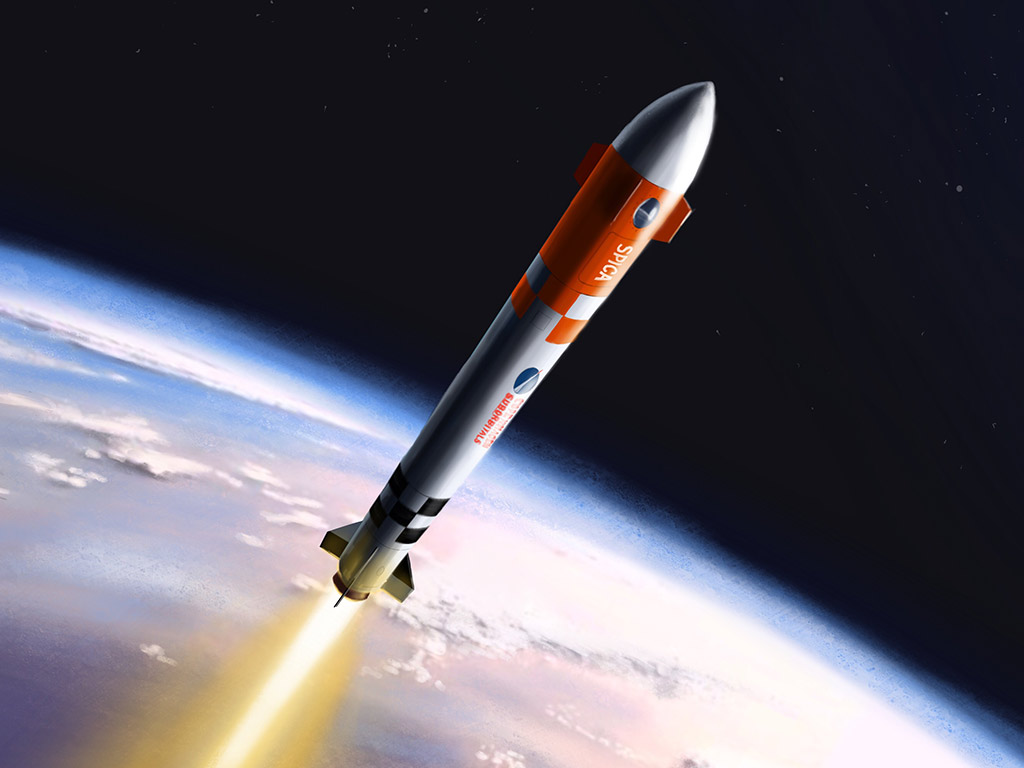
The Capsule
The first capsule we build will be a boilerplate model of the pressure hull made from steel. The challenges for creating a crewed capsule are significant – the capsule must be capable of surviving atmospheric stress on entry and ascent. It must hold pressure and support a homegrown life support system. Moreover, the capsule must be capable of returning safely to earth under its own parachutes from a peak velocity of almost mach three. You can read more about our progress on the capsule page (click button below).
Inter-tank Section
The inter-tank bridges the liquid oxygen and ethanol propellant tanks feeding our DIY bipropellant rocket engine. This is the first real section of our Spica rocket.
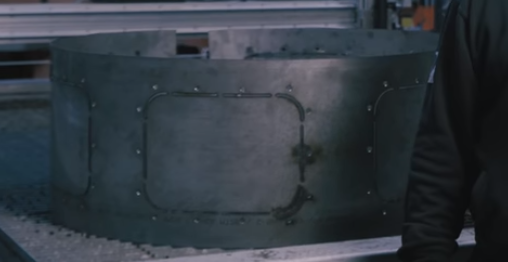
The Engine
Spica will be powered by a 100 kN liquid bi-propellant engine running on liquid oxygen and ethanol, just like our experimental BPM5 engine. Spica and the so far unnamed capsule will have a diameter of 955 mm, a total height of about 13 meter and a Gross Lift Off Weight (GLOW) of 4000 kg of which 2600 kg will be propellant. Spica is significantly larger rocket than our previous HEAT-1X and will be, by a significant margin, the biggest rocket ever built by amateurs.
The engine will be fed by pressure blow down, combined with an active pressurisation system. The propellant tank pressure will maintain a constant pressure for the first part of powered flight. The use of an active pressure regulation system results in a drastic increase in performance and lower GLOW, at a cost of higher complexity than any previous rocket produced by Copenhagen Suborbitals.
Attitude and Control
Spica will manoeuvre with thrust vectoring – the entire engine gimballing in two directions of motion to keep the rocket on course. Gimbals are 8-10% more efficient than the thrust vane system used by our earlier Sapphire and Nexø rockets. Gimballed engines are used on larger, orbital-class LVs to provide pitch, yaw, and roll. A gimballing technology demonstrator was developed for our BPM5 rocket engine in 2016.
Our current engine is based on a very conservative efficiency of only 80%. This way our design is resistant to mass creep or other performance issues. A performance-tolerant rocket also yields positives for our mission profile – if we can develop our engine to deliver a higher efficiency than 80%, we can shave weight and propellant off the rocket and create a system that is lighter than anticipated.
Launch and Landing
Spica will launch from an upgraded Sputnik offshore launch platform, capable of supporting the weight and mass of the launcher, fuel, and support equipment.
On launch, Spica will a Gross Lift-Off Weight (GLOW) of 4000 kg, thrust of 100 kN, with an initial Thrust to Weight Ratio (TTWR) of 2.55.
At T+20 seconds after launch, Spica will break the sound barrier. At T+90 seconds the engine will shut off at a velocity of around 3600 km/h, at an altitude of 50 km. It will take another 160 seconds for Spica to coast to apogee, at 105 km up. A few seconds later the ballute will deploy in order to stabilize the capsule through the thermosphere, mesosphere, and stratosphere. Approximately 9 minutes after launch at an altitude of 4 km the parachutes will deploy, providing a gentle descent to the Baltic sea and the waiting recovery team.
At the time of writing we still have a long and very exciting road ahead of us to reach our goal. As the only amateur based manned spaceflight program in the World, we encourage you to join our efforts and become a Copenhagen Suborbitals Supporter. Your help is our rocket fuel and is always appreciated!
Dear Copenhagen Suborbitals guests
We'll get right to it: We need your help to run Copenhagen Suborbitals. This is a 100% non-profit project driven by sheer joy and hard work. We survive on donations averaging about $10, that we use to pay for raw materials, tools, our workshop, electricity and most importantly, rocket fuel. The entire CS team are unpaid volunteers, building rockets in our spare time. If this project brings you joy, please donate to keep it running. Thank you.
You can also donate via Paypal from our Support Us page
